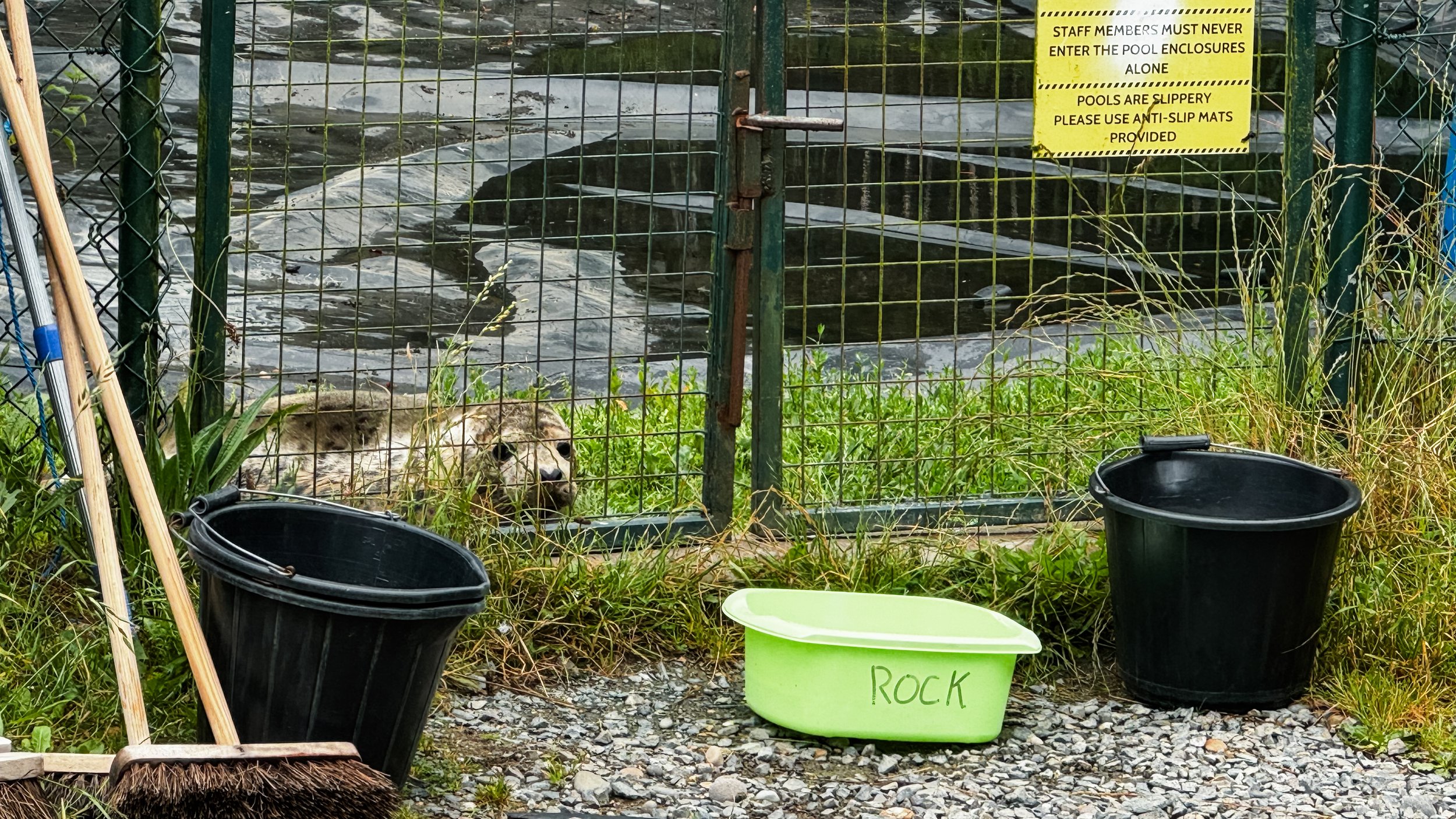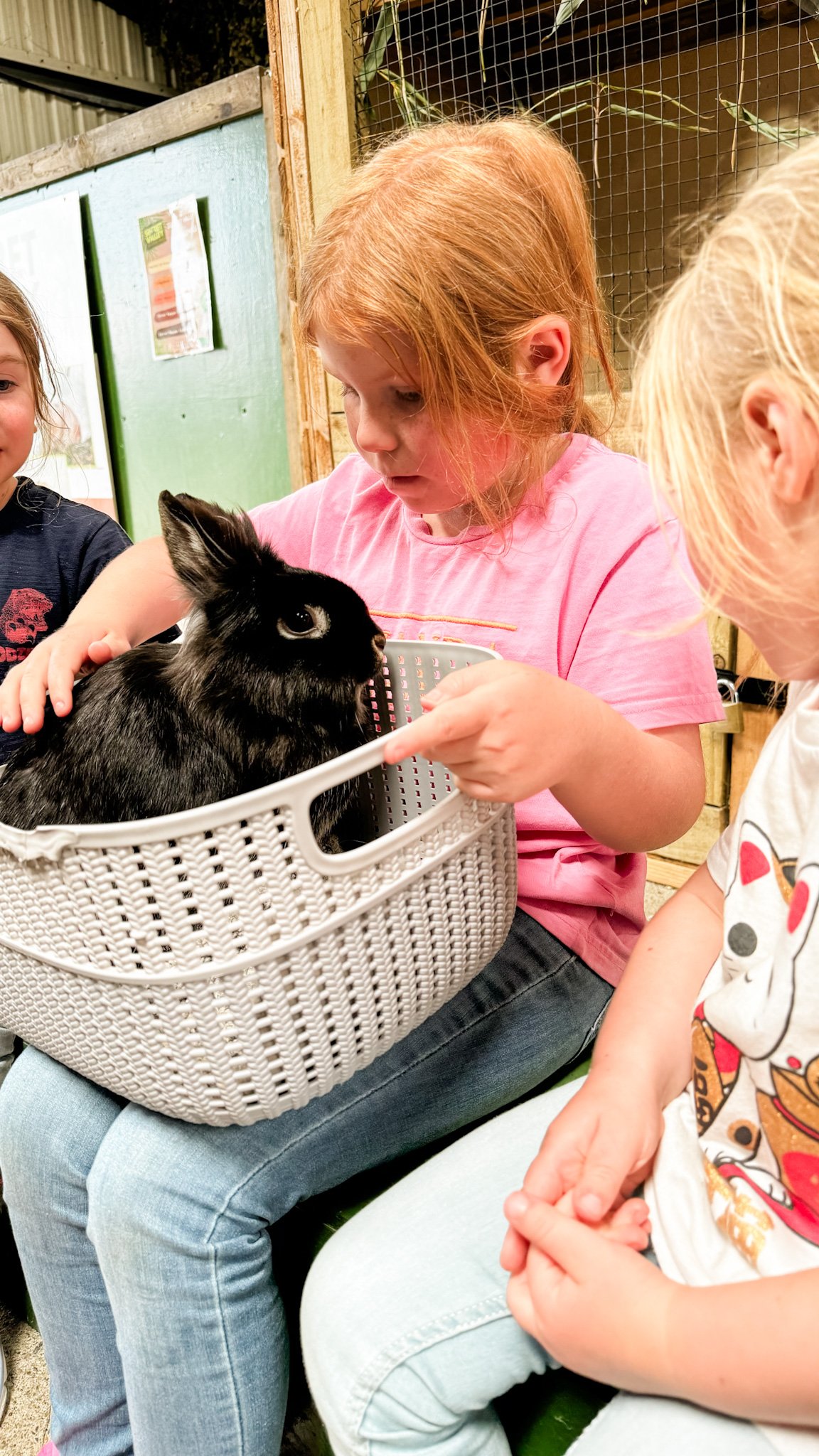Kia Ora Mini Farm is a family run open farm in Gorey, County Wexford. Its a wonderful day out for the whole family, with farm animals, fire engine rides, peddle carts, and plenty of outdoor play equipment. The girls had an amazing time and the weather was exceptionally sunny and warm.
The highlight for me (and probably the girls too ) was being able to pat rabbits. The rabbits had to sit in little baskets but we were able to stroke them while we had the baskets on our laps. The rabbits didn’t seem to mind and they were so soft. There were so many rabbits and guinea pigs, we even saw nest of new born rabbits.
The farm had so many other animals to look at like cows, ponies, deer, llamas, pigs, sheep, goats, chickens and roosters. (I didn’t take many photos of them though.)
But the thing that made the farm so good for young kids was all the toys and play equipment. I’ll list a few below:
There were mini peddle tractors that Hallie and Rooney loved riding around on.
There were real mini excavators that kids could operate.
Peddle Go-Karts that parents and kids could ride together.
A soccer game that was kind of like putt putt golf but with soccer balls (this was surprisingly fun for Braino and I)
A maze made out of netting with a slide at the end that the kids loved running around in.
A custom made fire truck that the farmer took people for a ride in. (As an adult, this was kind of boring but a 3 year old kid whose obsessed with trucks would totally love it)
Plenty of balls and soccer nets in the central grassy area, plus a sandpit.
Our girls had a great time but I could see how it would be a whole lot of fun for families with toddlers. All the activities were included in the admission price which was great and we were allowed to bring in our own picnics, although they did have a small cafe selling drinks, ice creams and basic stuff like chips.








































